After the Trump boom, what is the next hot narrative of the encrypted encryption?

Reprinted from panewslab
01/27/2025·3MAuthor: Tulip King
Compiled by: Deep Wave TechFlow

Alpha priority
- The market is generally healthy but there are signs of over-expansion, and the direction of the next wave of mainstream investment is unclear.
- Trumpcoin may have become the pinnacle of the Memecoin craze—should we turn our attention to SocialFi?
- Emerging hot spots: SocialFi, AI, Dinocoins, and more are vying for the market’s attention.
market conditions
Although the market has been volatile recently, overall, I think the market is still in a healthy state. Judging from the three core indicators of the encryption market, the performance is very positive.
Bitcoin consolidates at high levels and performs strongly
Bitcoin continues to consolidate near the top of its range, suggesting that market sentiment is leaning toward strength rather than weakness. In the current scenario, around $105,000 appears to be a key price level for Bitcoin. This level not only reflects the market’s confidence in the long-term development of cryptocurrencies, but also avoids the risk of over-optimism.
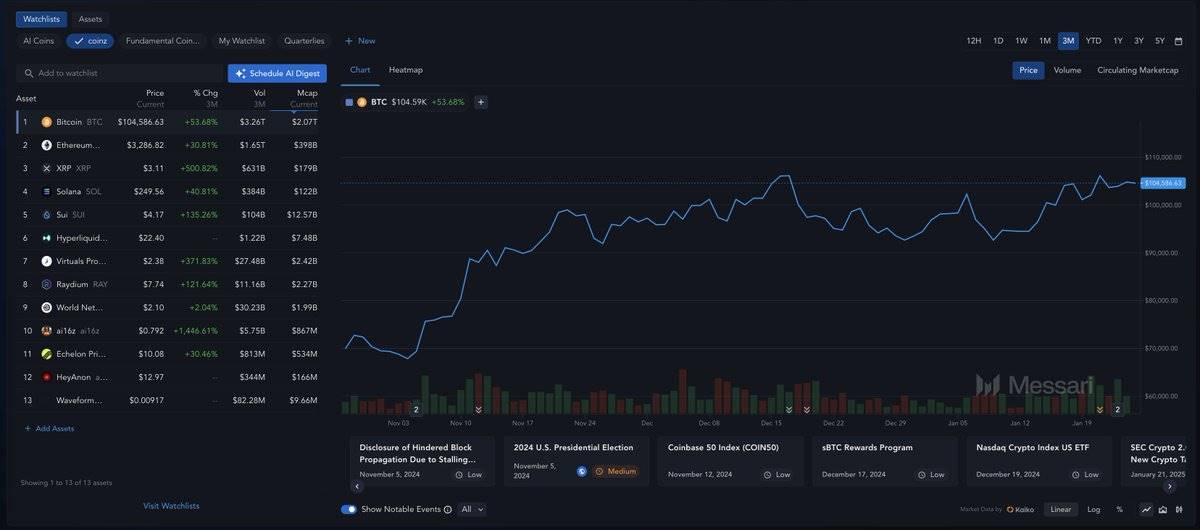
Bitcoin is consolidating at high levels, showing healthy market signals.
While we didn’t get some big news – like a Bitcoin Strategic Reserve (BSR) or comprehensive tax incentives for cryptocurrencies – the market still made some small progress. The pardon of Ross Ulbricht, for example, is a low-key but important signal that the Trump administration has not completely abandoned its pro-cryptocurrency policies. Although progress in improving regulatory transparency has been slow, the overall trend is positive.
Steady growth in stablecoin supply
Another positive sign is that stablecoin supply continues to grow. Judging from historical data, an increase in stablecoin supply is often a reliable precursor to increased institutional interest and market liquidity. It’s worth thinking about: Who is minting these stablecoins on such a large scale?
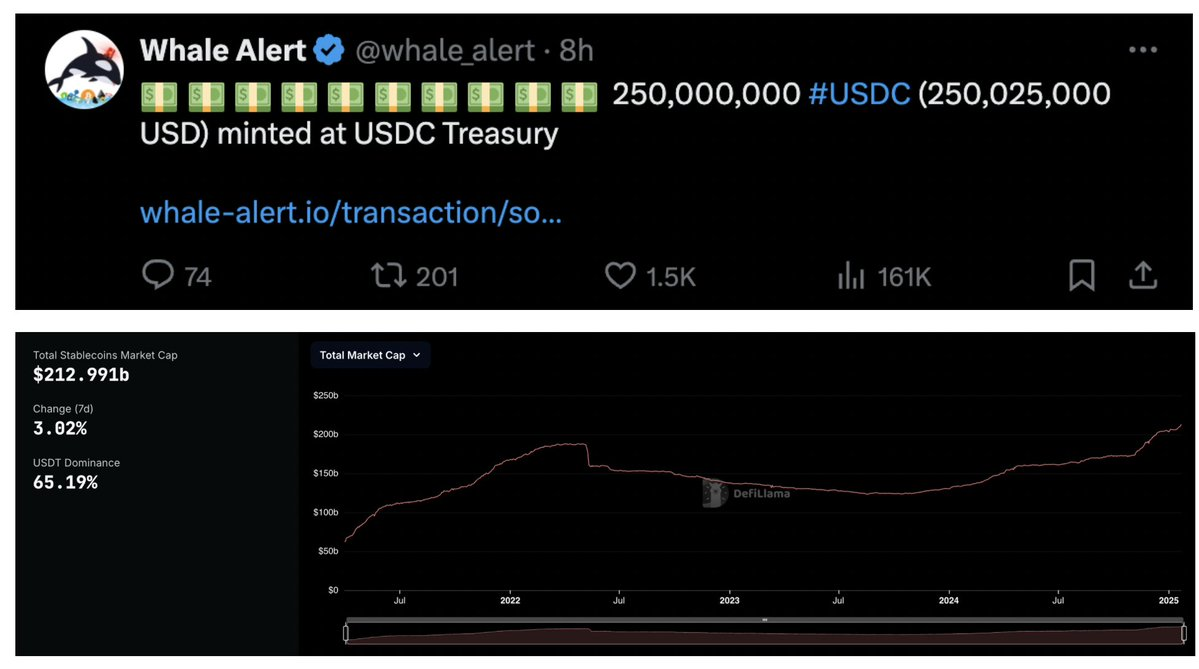
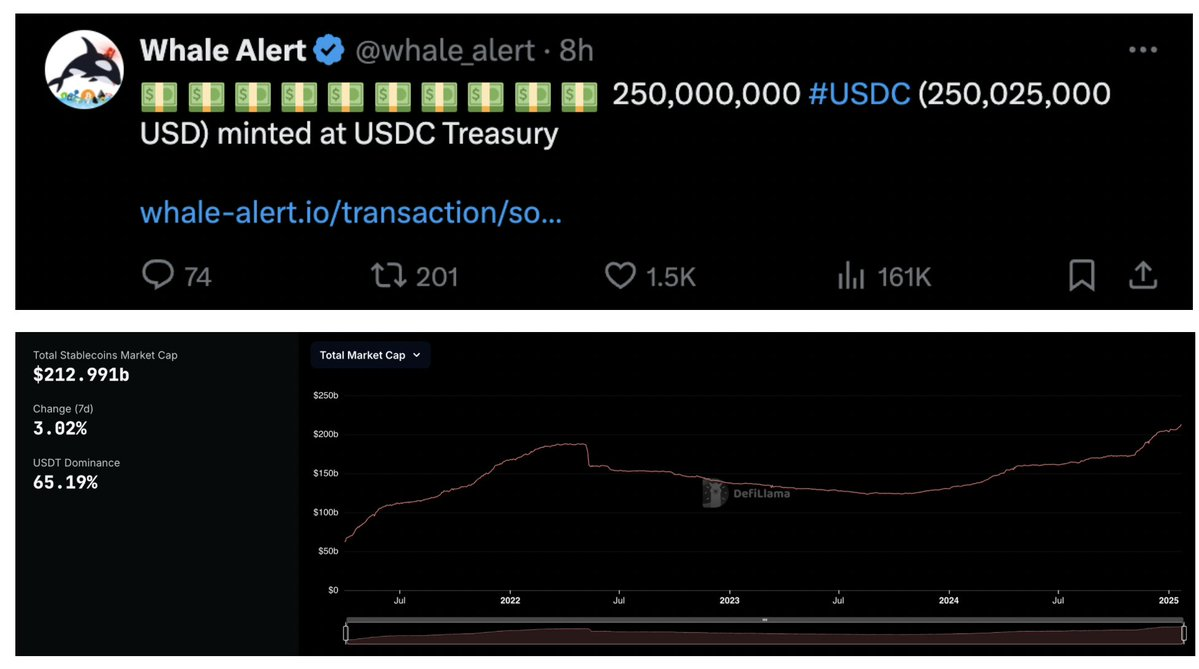
Stablecoin supply continues to grow, sending a bullish signal.
Judging from the scale of casting, institutions are indeed entering the market. If you doubt this, you can check the data from @whale_alert and other on-chain monitoring tools. Although it has yet to be clearly reflected in altcoin performance, capital is flowing into the market.
Expansion of total crypto market capitalization
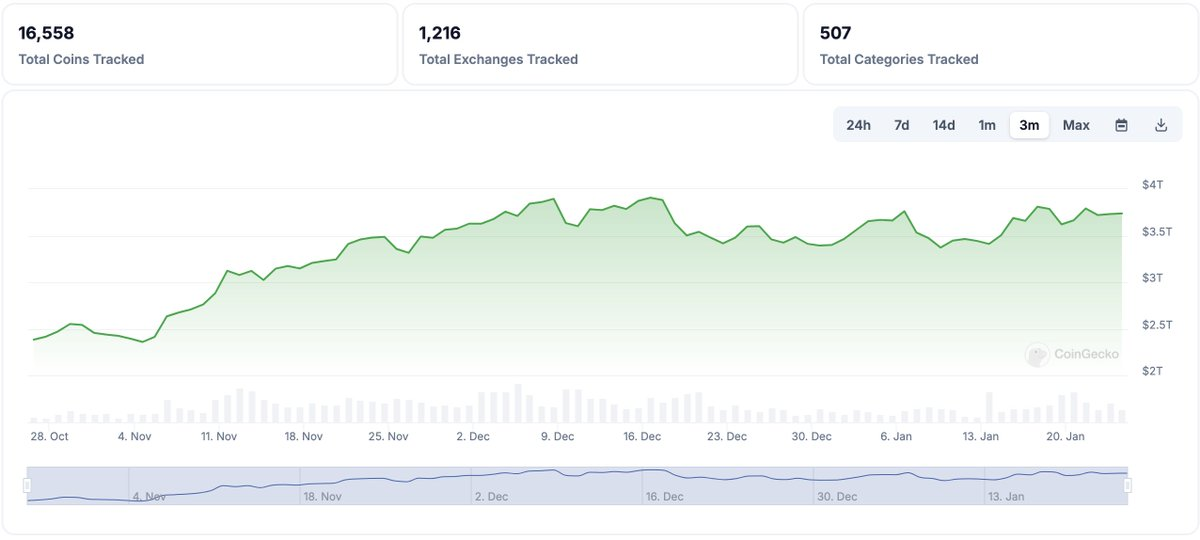
The total market capitalization of cryptocurrencies continues to grow.
Finally, the total market capitalization of the crypto market continues to expand. This growth, combined with Bitcoin’s strong performance and increasing stablecoin supply, is further evidence that the market is not on the verge of collapse. Instead, the market is strengthening its foundations and preparing for the next phase of growth, whatever form that phase may take. The current market does not look like a doomsday scenario.
Narrative Risk: Loss of Market Direction
An important reason for the lack of significant fluctuations in the current copycat market is that the market lacks a clear narrative direction. This is known as “narrative risk” – as markets lose their way, money can flow to the wrong investment themes, increasing risk.
Take the recent Memecoin craze as an example. Although Trump did not announce a strategic Bitcoin Reserve (BSR) or other major news, he did launch a Memecoin. Subsequently, Melania also launched a similar token, and there were even rumors that Barron might be involved. Traders show great enthusiasm for these opportunities, and I am no exception.
However, this sudden Memecoin craze has filled the market with uncertainty, leaving more questions than answers. Is this a Memecoin supercycle, or a top signal? Should we refocus on AI tokens? Why is XRP’s price chart showing such strong performance? No one, including the market itself, seems to be able to pinpoint exactly where funds should be concentrated at the moment.
Memecoins: The craze may be coming to an end
I have to regret to tell you that Memecoin trading may have entered its last wave. The impact of Trump’s overwhelming attention and market share in this area is difficult to underestimate. The question now is: who else can launch Memecoin on a similar scale? The answer is probably "no one."

In Kel's words, we have exhausted our "attentional resources."
The essence of Memecoin is to convert attention into tokenized assets. They rely on attracting public attention and converting it into speculative funds. This model has driven the explosive growth of the Memecoin market over the years. However, with the addition of Trump, this pattern may have peaked. Trump is not just any ordinary celebrity or internet celebrity, he represents the vast majority of global attention. No other figure or event can rival his dominance of culture and media.
Therefore, Memecoin may have reached its peak as an asset class. The growth space for attention tokenization has been fully tapped. Of course, there may be further gains for Trumpcoin, and it may even lead to one last parabolic rise for other Memecoins. But this feels more like an epilogue than a new chapter.
SocialFi (Clout and Yapster)
If the Memecoin narrative is to continue to grow, it needs to shift to a more sustainable and scalable model. This is the potential of SocialFi. By combining speculative enthusiasm with deeper, more personal interactions, SocialFi promises to continue the Memecoin story. Rather than betting on cultural phenomena or celebrity tokens, SocialFi offers an opportunity to invest in personal relationships and community dynamics. From this perspective, it is a natural evolution of the Memecoin concept - moving from pure attention conversion to more meaningful interactions and long-term value creation.

Why SocialFi is worth paying attention to
SocialFi is a potential hot spot to watch. Successful projects in this space may blend elements of social media and online gaming to create a hybrid platform that is both engaging and profitable. It is conceivable that it will be a combination of "social platform and online entertainment", and its potential for large-scale application cannot be underestimated.
Currently, there are two projects worthy of attention:
- Clout: Clout focuses on tokenizing social influence, allowing users with a large number of followers (10,000+) to create personal tokens. Built on Solana, it combines the monetization capabilities of Friend.tech while simplifying token issuance and integrating with decentralized exchanges such as Raydium. Clout has already seen early success, with its debut token $PASTERNAK reaching a market cap of $80 million in just a few hours. With a seamless registration process for credit cards and Apple Pay, Clout significantly lowers the barrier to entry for Web2 users. However, its open structure spreads liquidity among multiple influencers, potentially weakening the cohesion of the community.
- Yapster: Yapster is another innovative SocialFi project that combines social media, gaming, and cryptocurrency, also built on Solana. In contrast, Yapster’s approach is more focused, rallying the community around a common goal rather than spreading liquidity among multiple influencers. Users can participate in the daily game show and pay an entry fee of 0.25 SOL to create and vote for Memes. Winning Memes can even be minted into tokens, whose distribution is tied to participants' scores. This model focuses on a single Meme rather than many influencers, creating a stronger and more unified liquidity flow. Yapster's invitation-only beta testing further fosters a tight-knit, engaged community. A striking example is that its first token reached a market value of US$25 million in just 10 minutes, demonstrating its strong user participation and value creation capabilities.
@yapsterxyz: We understand that many users have encountered lags and other issues when running the game! We are currently working around the clock to fix these issues and strive to resolve them as soon as possible. Thank you very much for your understanding and patience while experiencing the beta version.

Stability issues caused by excess demand are usually bullish signals for the market.
While Clout offers many advantages to influencers in terms of scalability and operational simplicity, I prefer Yapster’s centralized mechanism and community-driven design. It focuses on converting public attention into actual value. This model is more sustainable and attractive than dispersing liquidity among many individuals.
Dinocoins (XRP, HBAR, XLM)
"What dies never dies, but is reborn stronger." - George RR Martin
Dinocoins (including XRP, HBAR, and XLM) are the classic “hated trades” of this cryptocurrency cycle. This trading pattern works because it reveals the emotional biases of market participants. The market's skepticism and disdain for these assets often means investors are under-allocated to them, resulting in large amounts of money remaining on the sidelines. When these assets begin to rally, investors are often forced to buy, driving prices even higher.
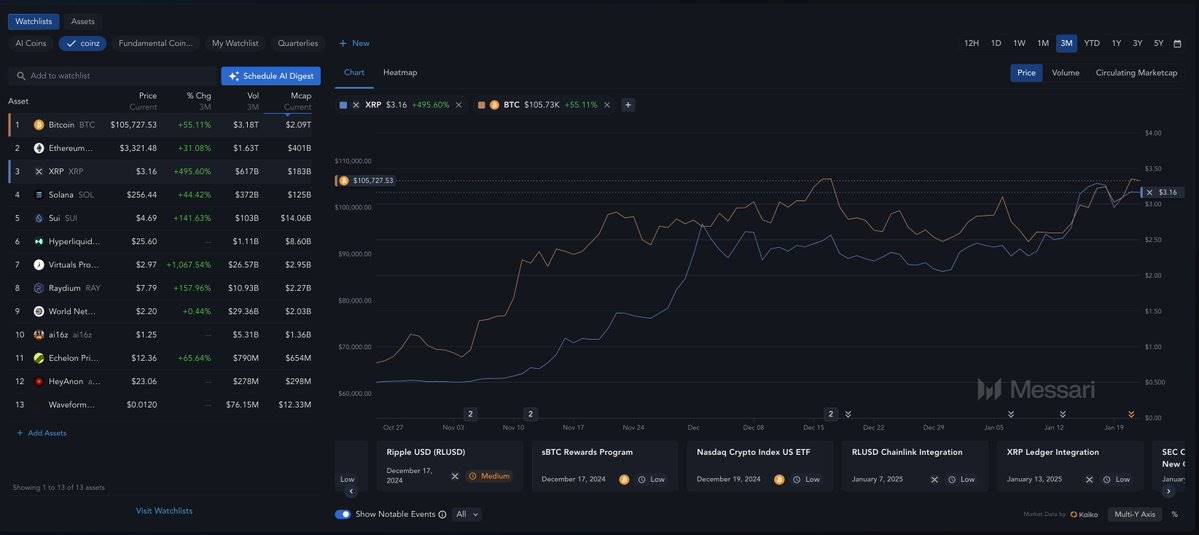
Bitcoin vs. XRP price chart.
Twitter users in the crypto community have long dismissed Dinocoins as outdated curios that have lost their competitiveness in the face of newer, more engaging narratives. However, it was this slight that created the opportunity for their unexpected resurgence.
Why do you need to pay attention now?
Despite their poor reputation on Twitter, Dinocoins have shown significant strength in price performance and institutional adoption. Here's why they're worth paying attention to:
- Institutional Recognition: These tokens reinforce a “more formal” positioning in the cryptocurrency space, focusing on real-world use cases and partnerships. For example, the new stablecoin RLUSD launched by Ripple demonstrates its efforts to integrate into mainstream finance. XRP's partnership with Santander and HBAR's partnership with the World Gemological Institute further demonstrate their commitment to institutional adoption.
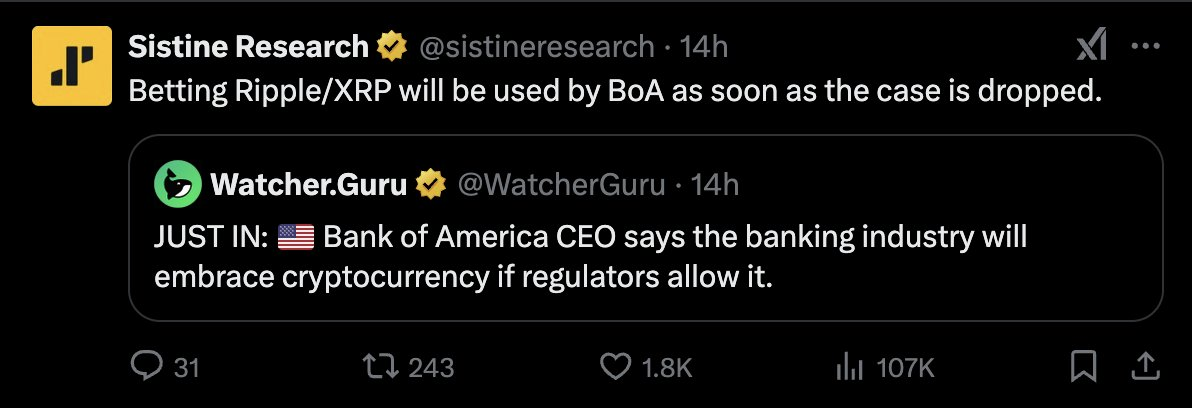
- Regulatory Landscape: With expectations of a friendlier cryptocurrency regulatory environment, these tokens are well-positioned. XRP and XLM’s ISO 20022 compliance, a standard closely tied to compatibility with traditional financial systems, enhances their credibility. Additionally, rumors surrounding XRP and HBAR ETFs (exchange-traded funds) add another layer of attraction, although Bitcoin ETFs remain the main focus of the market.
The contrast is stark: On the one hand, many cryptocurrency enthusiasts scorn them; on the other hand, institutions may be quietly embracing these tokens. Whether you love them or loathe them, Dinocoins are making moves that could redefine their role in the market. Their focus on compliance, partnerships and real-world use cases may ultimately be a winning strategy, especially if they win over regulators.
Liquid Token Operations for Hedge Funds
If you still believe in the concept of “fair launch,” then you need to face this reality: the life cycle of most tokens is not as democratic as it seems on the surface.
- Team Development Project: A project team will typically develop a project with a decentralized finance or infrastructure vision and create a token as part of the ecosystem.
- VCs provide funding in exchange for locked tokens: Venture capital institutions (VCs) provide funding to projects in exchange for tokens that are locked or unlocked in stages. This arrangement theoretically ties the VCs' interests to the long-term success of the project, since the tokens cannot be sold immediately.
- VCs sell unlocked tokens to liquidity over-the-counter (OTC): When tokens begin to be unlocked or released in phases, VCs typically sell these tokens to liquidity via over-the-counter (OTC) transactions. These liquidity funds are usually well-capitalized institutions that buy these tokens in large quantities at discounted prices.
- Liquidity funds sell tokens when market volume is high (you are at this stage now): After acquiring these tokens, liquidity funds try to create or capitalize on the market craze. They use platforms such as Twitter to promote narratives, attract market attention and increase trading volume, thereby profiting from selling tokens at high prices under the right conditions.
actual situation
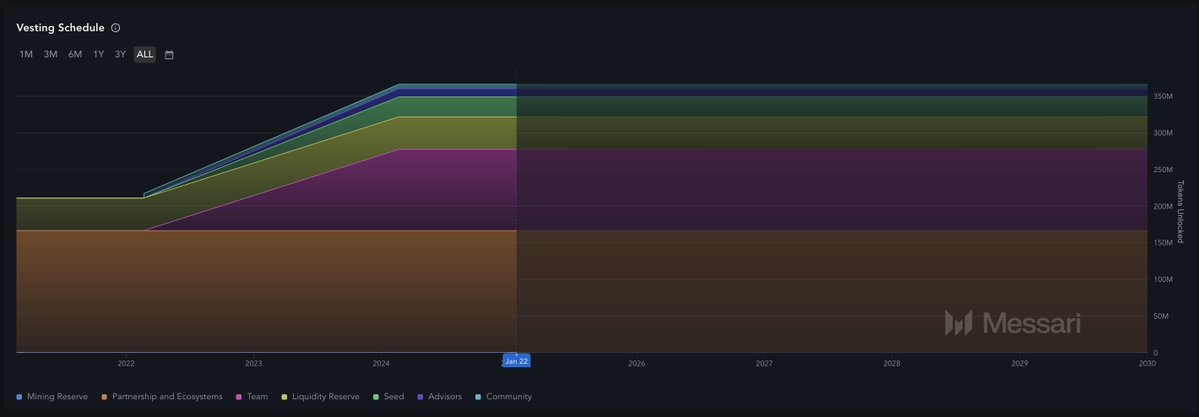
In the case of Raydium, its token appears to be mostly unlocked at the moment.
Between 2021 and 2023, venture capital will flood into the crypto market, especially DeFi and infrastructure projects. These investments are typically made in the form of locked or phased-release tokens. However, with most tokens now unlocked, VCs need to liquidate these assets to deliver a return on investment to their limited partners (LPs). Starting in mid-2024, many well-known VCs began to call for raising more liquidity. This liquidity purchases these illiquid tokens through over-the-counter (OTC) transactions, providing a market for VCs to liquidate unlocked tokens.
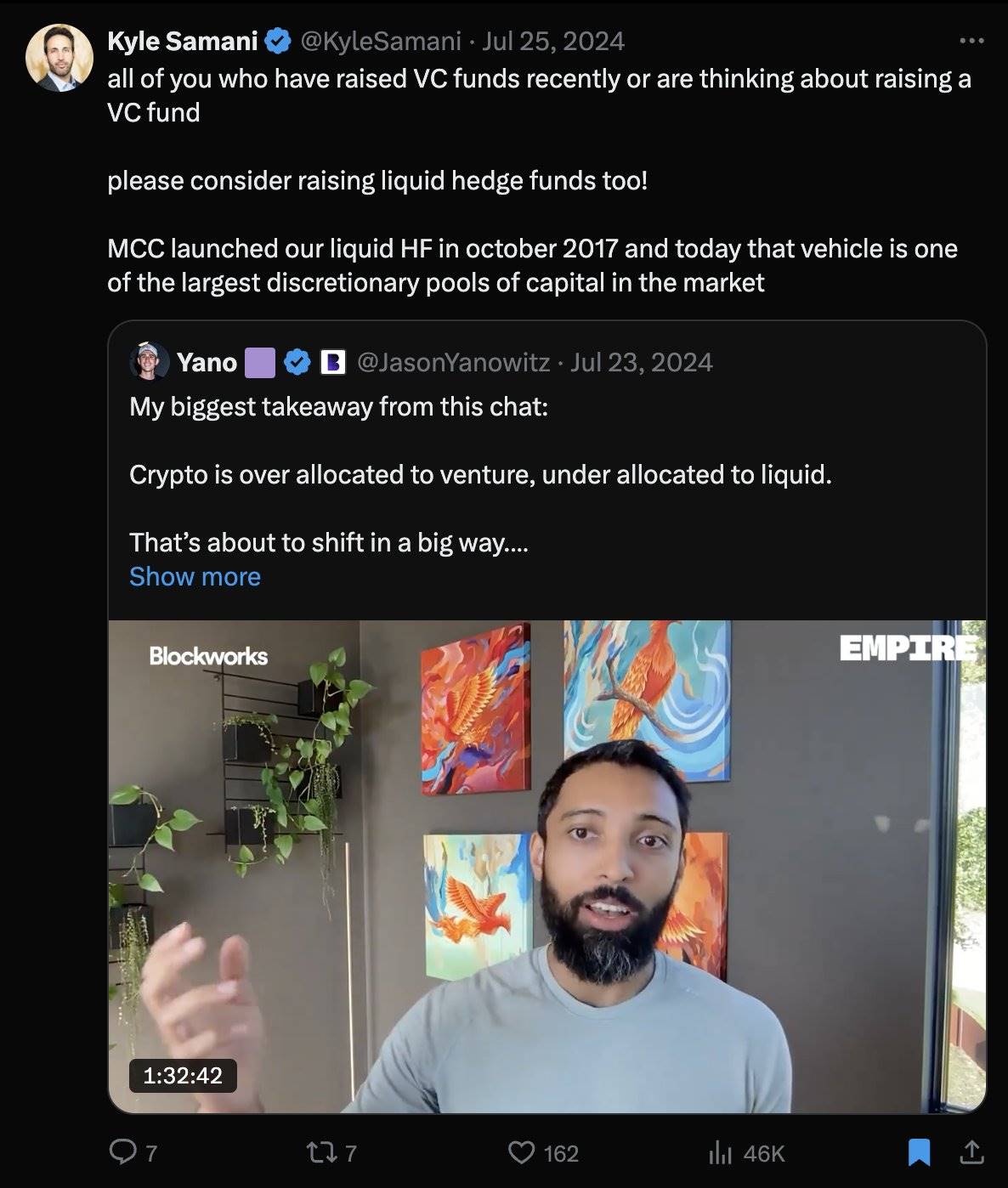
Rather than blaming the participants, understand the rules themselves. VCs are pushing people to raise liquidity in order to take over their tokens via OTC and thus start distributing profits from the previous cycle to LPs.
The relationship between VCs and liquidity and markets is not motivated by malicious intent, but is a natural phenomenon of capital flows in the crypto ecosystem. VCs rely on well-funded liquidity to acquire their tokens, which are often sold at low prices due to illiquidity. In turn, liquid funds will try to create or amplify market narratives through platforms such as Twitter, attract market attention and increase trading volume, so that they can profit from selling these tokens at high prices when market conditions are favorable.
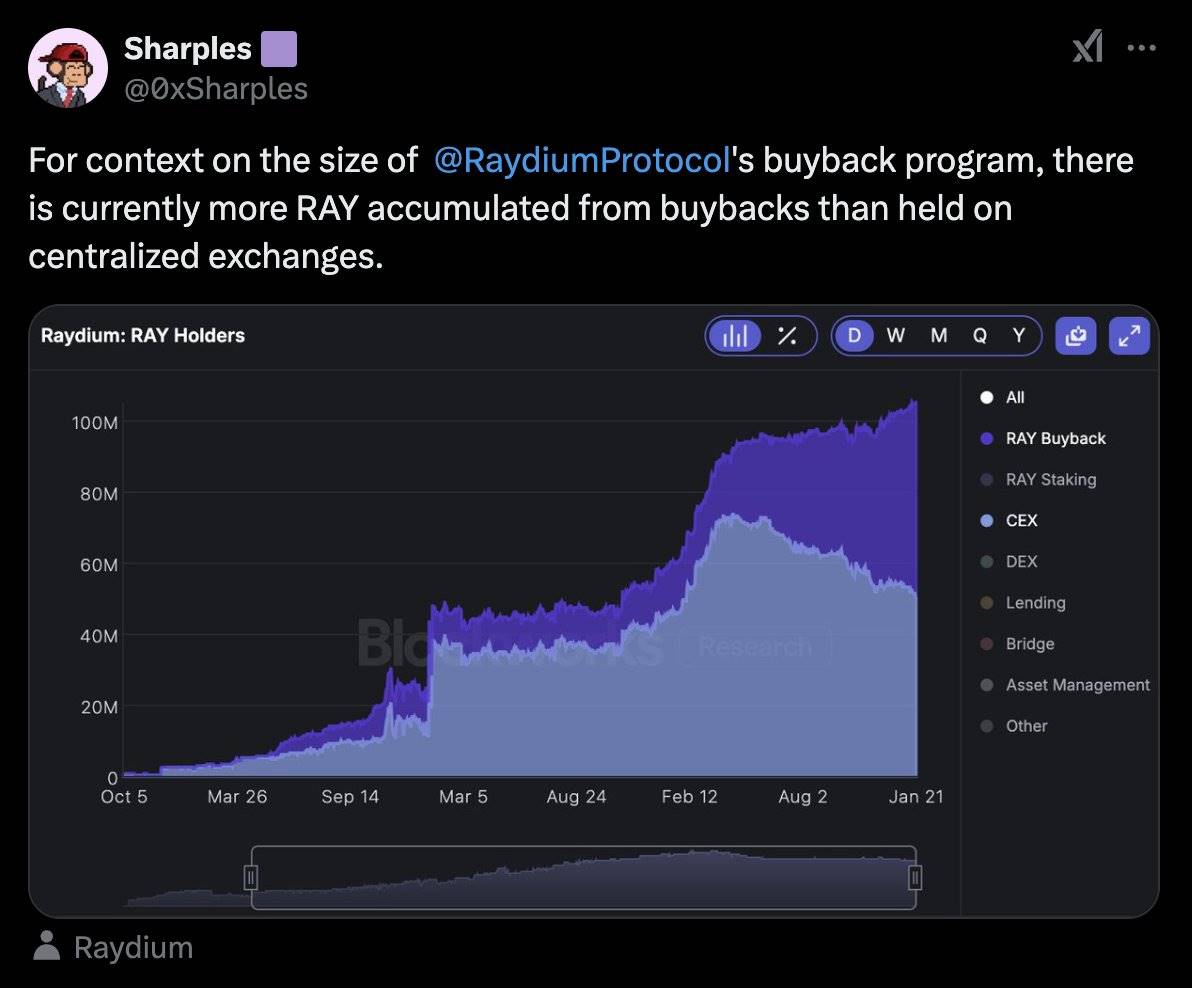
The fit between market narrative and time nodes.
This is not necessarily malicious behavior, I am even buying some of these tokens. But you need to understand your counterparties and have a clear understanding of the life cycle of the token.
AI Agents and DeFAI
DeFAI could potentially replace many existing encryption tools. If enough functional integrations are implemented, a DeFAI router can simultaneously serve as a revenue aggregator, a decentralized exchange (DEX) and perpetual contract aggregator, a portfolio management tool, and even more.
However, I have reservations about AI agents that claim to "help you make money." Market dynamics determine that excess returns (alpha) will gradually decay over time. But even so, DeFAI still has the potential to provide important support to individual investors by simplifying personal trading strategies and portfolio management.
Currently, AI is at a critical development juncture. AI hotspots have gone through several stages: first infrastructure projects like Bittensor, then agent projects like AIXBT, and then agent launch platforms (such as Virtuals) and frameworks (such as AI16Z). Today, the latest trend revolves around DeFAI.
An important trend is taking shape
AI is undoubtedly one of the most important market hot spots in this cycle, but its long-term development direction remains unclear. The rise of DeFAI is particularly noteworthy because it does not promise magical “money-making AI” but is more focused on practical functionality, such as streamlining the process of return optimization, trading, and portfolio management.
DeFAI is unique in that it promises to consolidate the currently fragmented ecosystem of cryptographic tools. Imagine a router that can seamlessly integrate multiple financial instruments, which can significantly reduce user operational friction. Although the idea of a "money-making AI agent" sounds unrealistic, the advantage of DeFAI is to help users execute their strategies more efficiently.
Changing market trends
Like all major market topics, the AI field is evolving rapidly, driven by hype and experimentation. From the initial promise that AI will bring financial freedom to the actual capabilities provided by DeFAI today, this change reflects the market's gradual shift from fantasy to practical applications. It is foreseeable that AI will continue to be a core theme, but the ultimate winners will be those projects that can meet real needs and avoid over-promise.
The crypto market is still full of unknowns. Market hot spots change rapidly, and the winners in the future will be those players who can predict in advance where the public’s attention will flow. Stay sharp and flexible while keeping an eye on the big picture and don't get fooled by short-term fluctuations.



 chaincatcher
chaincatcher
